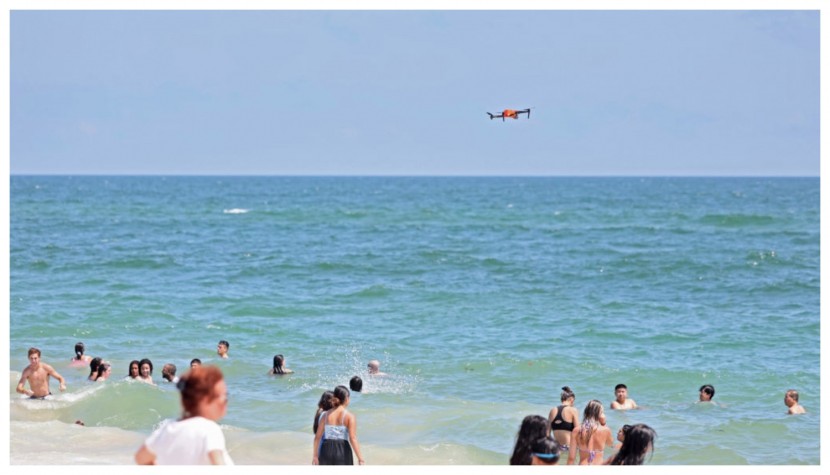
A fleet of drones deployed to surveil New York City beaches for sharks and swimmers in distress have been under attack by angry avian perpetrators.
The drones first took flight in May and were immediately met by "very annoyed" birds who responded to the interruption of their air space by swarming and swatting at the foreign devices.
"They will fly at it, they'll swoop at it, they'll be vocalizing," Veronica Welsh, a wildlife coordinator at the New York City Parks Department, said, according to the Associated Press. "They think they're defending their chicks from a predator."
In response to a lifeguard shortage, the NYPD announced the implementation of drones at its beaches earlier this year. The idea is to rescue struggling swimmers by dropping a flotation device from the drone which immediately inflates once it hits the water.
Despite four drownings at city beaches so far this summer, there have been no rescues to date. However, the drones did alert their first shark sighting Thursday, prompting officials to close an NYC beach, the outlet reported.
No birds have been harmed, but New York avian experts and conservationists pointed out the intrusive technology could potentially push out the beach's bird population – specifically, American oystercatchers.
"We don't know a lot about what sort of distance is required to protect the birds," David Bird, a professor of wildlife biology at McGill University pointed out, according to the AP. "But we do know there are birds on this beach that are highly endangered. If they abandon their nests because of the drones, that would be a disaster."
As a result, the police department agreed to launch its drones further from nesting areas, after the city's emergency management department brought the concern to the attention of drone operators.
"We pointed out that there's a nest here and there's two angry parents who don't want you anywhere near their eggs or their babies," Natalie Grybauskas, the agency's assistant commissioner, said.
New York isn't the only city to implement drones as part of its beach safety protocols. Officials in Long Island, New York and Australia also deploy similar devices for monitoring.
© 2026 HNGN, All rights reserved. Do not reproduce without permission.









